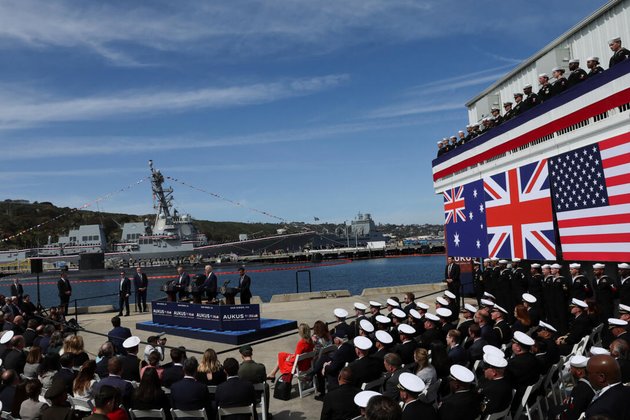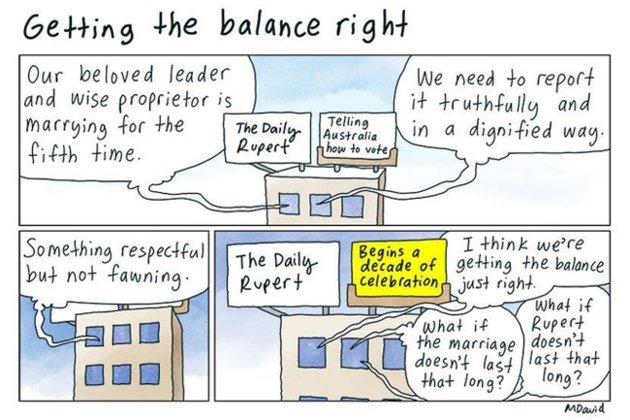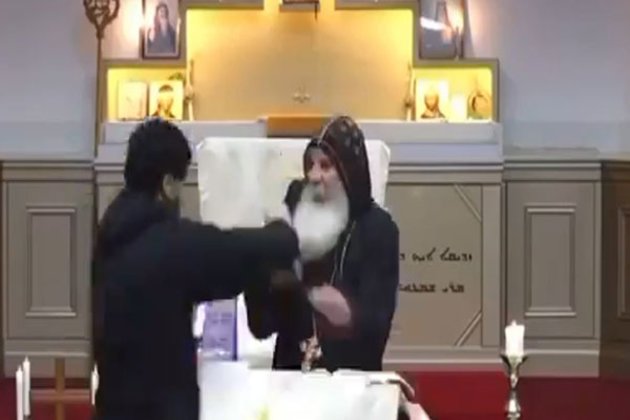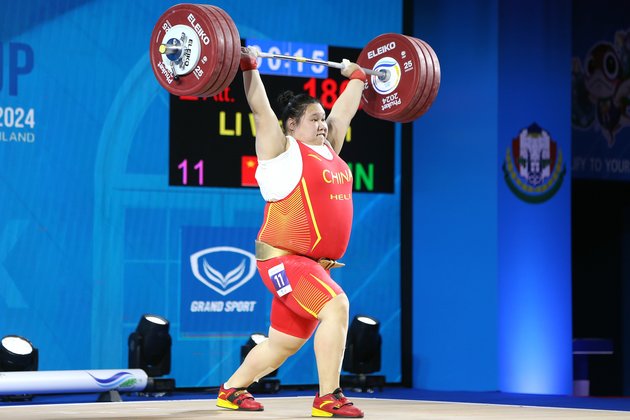2LT International News
Pell accuser knowedge of sacristy under scrutiny
Mar 30, 2020
Cardinal George Pell’s accuser claimed to be familiar with the layout of a renovated sacristy and this fact means we have a crucial experiment for the truth of his claims. This important insight has not been apprehended even by those who have studied the affair most closely.
That’s an astonishing claim that I hope to make plausible by examining the rulings in the intermediate court. However, the point I want to make here is that only if we understand this point will we have a clue as to why the jury made its perverse judgement in finding Pell guilty of the crimes alleged against him. There are three claims here and I will take them in turn beginning with the idea of a crucial experiment.
The first point is one that I have addressed frequently, but most thoroughly here.[i] In the original story to the police, and again the complainant, when with them he visited the Cathedral for a walk-through, said that with the other boy, they had located altar wine in the storage area next to the door. That’s where they were when Pell entered the room and started exposing himself, his back to the door. This storage area was appropriately described as a storage kitchenette as it had two sinks and the space could be closed off by two doors with wooden panels a detail that apparently the complainant knew. Moreover, in the police photos taken at the time an opaque bottle of wine is shown on the kitchenette.
These details were reported to Pell by the detective in charge of the case, but shortly after interviewing Pell’s MC and the sacristan in 2016, the police learned three key facts: that eight years after the allegations the sacristy had been renovated; that the sinks of the kitchenette were only then installed; and that at the time the storage area where the wine was supposed to be located had been a wardrobe (with vinyl, concertina doors). This ought to have yielded the crucial evidence, not only because the complainant had made mistakes, but more pertinently because he had accurately described the modern sacristy. He had knowledge, for sure, but this was recent knowledge, and how could he have known about the kitchenette unless he had been coached (or by some other means destructive of his credibility)?
Undaunted, the police returned to the OPP a second time urging that charges be pressed, presumably advancing that they had new evidence. Eventually at trial the complainant would give evidence that actually he had found wine in the far corner, in an alcove.
This was problematic for all sorts of reasons, not least that it was impossible for anyone in the alcove to see someone “planted in the doorway” as the kitchenette blocks the view. However, a story was cobbled together and the Crown managed to make a surprising and powerful point. They too could urge a crucial experiment. In 2016 the police had also learned that in the corner of the room (near the vault where the wine was stored) there used to be a sacrarium, a kind of sink.[ii] The contention was that this was the kitchenette the complainant was referring to, and since that furniture was contemporaneous with the allegations, how else could he have known about it unless he had a genuine recollection from the time?
The Crown’s ambush had no basis in the evidence, and the account you are reading here can be demonstrated beyond any doubt, but the point is that Mark Gibson i putting the Crown’s case presented his “facts” as yielding a crucial experiment. It was a clincher. That’s the important insight that I claim has been completely neglected, even at this late stage when the final appeal has been heard before the High Court.
The second point to make is that the account just presented failed to register in the August ruling from the Victorian appeal judges.
The majority relate the new story, with the wine being found in the “storage kitchenette” in the concealed alcove area in the corner, citing the details of the wooden panels (44), indicating that the complainant knew details of the layout (59). Later, in (95), the majority record, “As the Crown pointed out, A correctly placed the wine area in the alcove, not where it is currently located.”
But the majority are using indirect speech here. They do not write, “As the Crown correctly pointed out, A placed the wine area in the alcove, not where it is currently located.” That is, no independent assessment is made as to this important detail in the evidence. The majority never refer to the new installation or the fact that at walk-through the complainant pointed at the storage kitchenette claiming that it was unchanged.
The dissenting judge was familiar with the story about the concealed (377) alcove (431) with wood panels (377, 430, 468, 470, 834) and that new sinks (468) had been installed (835) and that previously the dcor was woodgrain (468), details that had gone unnoticed by the complainant (834). The old sink, the sacrarium, is reported (500) and even the attempt of the Crown to use the crucial experiment: in June Christopher Boyce “posed the rhetorical question, how then could the complainant have gained that knowledge of the layout of the sacristy?” (908 and see 838).
Perhaps Mark Weinberg thought that the discrepancies sufficiently undermined the complainant, but he does not explain how the story shifted or that potentially the “crucial experiment” could have been turned against the Crown.
The judge here is like someone who has helpfully assembled many of the pieces of the jigsaw, leaving them unconnected because the centrepiece goes unnoticed. Thus, he never reports on how in the Rome interview the informant, detective Chris Reed, described the allegations of the complainant regarding the layout, and so as indicated, his ruling never details the narrative shifts. Although Weinberg is aware that the complainant pointed to the storage kitchenette as being unchanged, he does not quite spell out the significant detail that this is where he had first located wine, in a wardrobe. And he never brings to our attention the fact that aspects of the story are physically impossible the boys in the alcove would not be able to see Pell planted in the doorway.
If someone as careful and intelligent as Weinberg missed these points, it is perhaps unsurprising that others did. No transcript of the Rome interview was made publicly available until recently, and even in Canberra the significant issue does not appear to have been grasped. Thus, Kerri Judd, with Gibson at her side even used the phrase “storage kitchenette” as the complainant had originally done, no doubt to his alarm as, taking note of the precise time, it was presumably he who removed the embarrassment from the official transcript though not from the official video and later, when searching for le mot juste, as the video show, Gibson is on hand to help the new Director of Public Prosecutions with the apt description of the alcove area it was a storage kitchenette.[iii]
Our third point regards the case as presented to the jury at the second trial. With hindsight, we can infer the significant issue, one that was reported by journalists at the time. Thus Melissa Davey, referring to Gibson’s “succinct but powerful closing remarks,” four times spells out the clinching question, what we have called a “crucial experiment”:
“You might ask yourselves how would he know that unless he was in there,” Gibson said. “How does he know about the concealed alcove area without actually being there? How does he know it’s a storage-kitchenette kind of thing and there being a wood-panelled area if he’s not been in there? “How does [the complainant] know that that was where the wine was kept?”[iv]
The context needs to be appreciated. It is reported that at the first (mistrial) some jurors were in tears, and we imagine that the second jury were also torn. We recall the atmosphere of the witch-hunt: Operation Tethering, Tim Minchin’s song, Louise Milligan’s book,[v] the campaign in the mainstream and social media, and the pressure from victim support groups.[vi] The jurors were warned by the judge about the mob outside the court (who paid for the posters?) and it is said that Chrissie Foster sat opposite the jury glaring at them throughout the trial. In this polarised atmosphere, perhaps, a crucial experiment that could decide one way or another would have been at a premium. Very probably, although the jury may have had their doubts, they would have been minded to decide one way or another.
At any rate, in their respective closing addresses only one side volunteered the clincher. Logically speaking, Robert Richter did an excellent job. In the first trial he had actually spelt out the awkward fact:
The next matter of improbability is J’s description of the Priests’ Sacristy. He pointed to a cupboard which he said was the wine cupboard. But at the time, the cupboard was a clothes cupboard, not a wine cupboard.[vii]
Moreover, in the second trial he adverted to the mistakes in the walk-through made by the complainant with regards to the storage kitchenette that he thought was just the same. The detail here regarded the fact that on that furniture some wine was on display; it was in an opaque bottle just as the complainant had described, though the court had heard that at the time only white wine in clear bottles was used.
But what Richter did not explain forcefully was that the real problem was not that the complainant knew too little but that he knew too much. He could describe the furniture of the future! In the trial, as in the August ruling, the details of the Rome interview went unheeded, and so the embarrassing shifts in the narrative about which we take it Gibson was well acquainted were never brought to the fore.
The jury, then, were presented with a pseudo crucial experiment that received no rebuttal and were not presented with the genuine crucial experiment that was incapable of rebuttal. This fact may explain why the jury reasoned as perversely as they did for Richter had presented a mountain of evidence raising many reasonable doubts.
We need to bear in mind, here, that the narrative shift one of several was occasioned when the police found out about the layout in 1996, an awkward fact that we would hope will be the basis for a future inquiry. Judge Kidd, however, had ruled out any suggestion that would discredit the Victorian police. Perhaps this explains why the avenue was not explored, but to reiterate, the chief evidence here is the Rome interview, a publically accessible document.
It must be urged, moreover, that this open source was hardly prominent in Canberra, and the High Court have not chosen to act quickly so as to quash the case. For this reason it is quite possible that the crucial experiment, the signpost at a fork in the roads pointing out the right direction, may go unnoticed. Then, perhaps, those questions for a future inquiry will remain unasked.
(The writer Doctor Chris Friel taught maths for many years before undertaking, first, a masters in Philosophy, and second, doctoral research on value and credibility in the thought of Bernard Lonergan. In 2018 he investigated at length the “purposely timed hysteria” of the pro-Israel hawks in the UK amidst the antisemitism crisis, and commencing in 2019 has devoted an equally lengthy exploration of the Cardinal George Pell case and its context).
Also by Chris Friel: Trials and tribulations of Barwon’s highest profile prisoner | The final piece of the puzzle in the Pell case | Cardinal Pell – The Case for the Prosecution | Counsel for George Pell argues for conviction to be set aside | Reviewing the Pell appeal which goes before high Court on Wednesday | George Pell Case – The wine in the wardrobe revisited | Evidence in trial of Cardinal George Pell confusing and inconsistent | Hiatus theory in Pell trial looking increasingly wobbly | Cardinal George Pell conviction, uncanniest of them all | Where were the concelebrant priests if Pell was in the sacristy? | Juggling of times in Pell case only raises more questions | Pell alibi looms as crucial factor in High Court appeal | Chorister supported Crown case against Pell | The Pell case – “Having reviewed the whole of the evidence…” | Cardinal Pell’s Innocence or Guilt – now a matter for the High Court | Credibility of George Pell accuser under scrutiny | A Critique of Ferguson and Maxwell | How the Interview Changed the Story | Cardinal George Pell learned of charges against him in Rome Interview
Related story: High Court of Appeal in Australia to review conviction of Cardinal
References:
[i]https://www.academia.edu/42272446/How_the_Jury_were_Convincedsee also https://www.academia.edu/42327289/Strategy_and_Tactics_in_the_Case_against_Cardinal_Pell
[ii] Apparently there still is a sacrarium in the alcove, but the evidence suggested the past tense.
[iii]https://www.academia.edu/42245687/On_a_Redaction_in_Kerri_Judd
[v]https://www.academia.edu/40135146/Milligans_Cardinal
[vi]https://quadrant.org.au/opinion/qed/2019/05/the-social-media-witch-hunt-for-george-pell/
[vii] https://www.academia.edu/42327289/Strategy_and_Tactics_in_the_Case_against_Cardinal_Pellhttps://www.academia.edu/42314083/The_First_Pell_Trial_Notes and also https://www.academia.edu/42318135/Remarks_on_the_First_Pell_Trial_in_Comparison_with_the_Second_3







